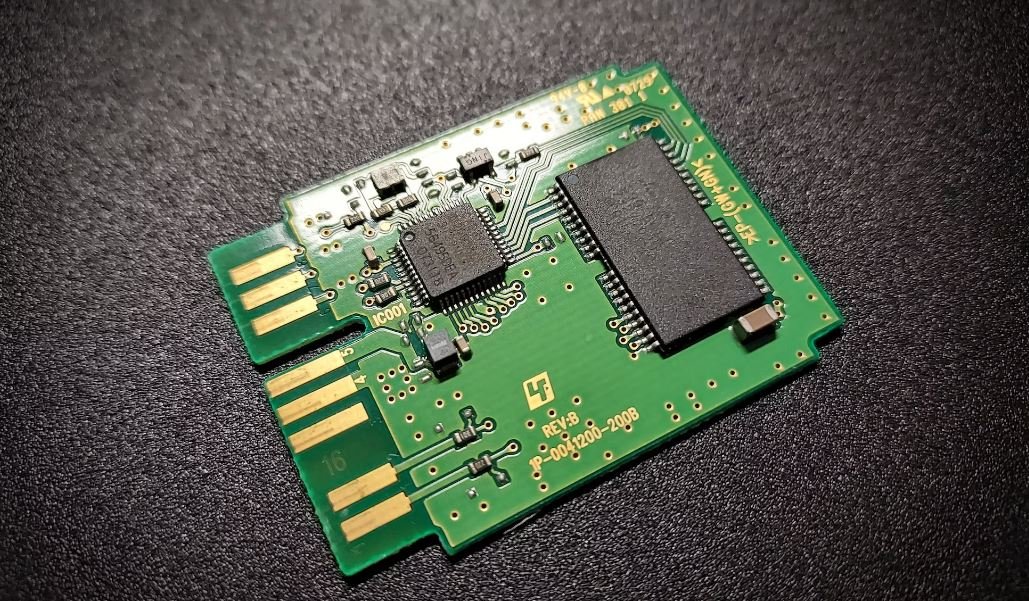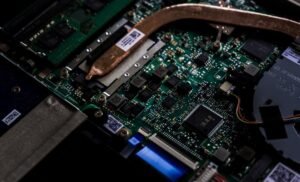**Key Takeaways:**
– OpenAI and Microsoft have entered into a strategic partnership to advance AI technologies.
– The collaboration aims to combine OpenAI’s AI capabilities with Microsoft’s cloud computing infrastructure.
– The partnership will make AI technologies more accessible to businesses and individuals.
OpenAI, founded by Elon Musk and others, is renowned for its research and development in the field of artificial intelligence. Their mission is to ensure that artificial general intelligence (AGI) benefits everyone. AGI refers to highly autonomous systems that outperform humans in most economically valuable work. OpenAI has been developing state-of-the-art language models like GPT-3, which have demonstrated capabilities such as natural language communication and content generation.
Microsoft, on the other hand, is a leader in cloud computing and offers a wide range of services through its Azure platform. The company brings vast expertise in building and deploying real-world AI solutions across various industries. By collaborating with OpenAI, Microsoft aims to enhance its AI offerings and provide more powerful tools and services to its customers.
This partnership will enable OpenAI to leverage Microsoft’s Azure cloud infrastructure, allowing them to scale the deployment of their models and deliver AI solutions on a larger scale. It will also provide OpenAI with access to Azure’s rich set of AI tools and services, enabling them to accelerate the development and refinement of their models.
*Interesting fact: OpenAI’s GPT-3 model has 175 billion parameters, making it one of the most powerful language models ever created.*
On the other side of the equation, Microsoft will benefit from OpenAI’s advanced AI capabilities and expertise. It will be able to incorporate OpenAI’s state-of-the-art models into its own services, making them even more advanced and effective. This collaboration will also help Microsoft in addressing complex challenges across various industries, including healthcare, finance, and climate change.
One of the key objectives of this partnership is to make AI technologies more accessible to businesses and individuals worldwide. Both OpenAI and Microsoft recognize the importance of democratizing AI and ensuring that its benefits are available to everyone. By joining forces, they aim to lower the barriers to entry for AI adoption and empower organizations of all sizes to leverage the power of artificial intelligence.
To demonstrate the potential impact of this collaboration, let’s take a look at some interesting data points:
**Table 1: Growth of OpenAI’s Language Models**
| Model | Parameters | Release Year |
|————————-|————|————–|
| GPT-1 | 117M | 2018 |
| GPT-2 | 1.5B | 2019 |
| GPT-3 | 175B | 2020 |
**Table 2: Microsoft AI Services**
| Service | Description |
|———————————————-|——————————————————————————————————————|
| Azure Cognitive Services | Pre-built AI models and APIs for vision, speech, language, and decision-making. |
| Azure Machine Learning | A cloud-based service for building, deploying, and managing machine learning models. |
| Azure Bot Services | Create intelligent, conversational chatbots using natural language understanding and dialogue management. |
| Azure Computer Vision | Extract insights from images and video, including object detection, text recognition, and facial analysis. |
| Azure Speech Services | Convert spoken language into written text or enable voice-controlled interactions in applications. |
| Azure Natural Language Processing (NLP) | Use AI to extract insights from unstructured text, detect sentiment, and enable language understanding. |
**Table 3: OpenAI and Microsoft Partnership Benefits**
| Benefits | Description |
|—————————————————————————————————|——————————————————————————————————————|
| Accelerated development of AI technologies | The partnership will speed up the advancement of AI capabilities through combined research and resources. |
| Access to Microsoft Azure’s cloud computing infrastructure | OpenAI can leverage Azure’s scalable infrastructure to deploy their AI models at a larger scale. |
| Enhanced AI offerings for Microsoft customers | Incorporating OpenAI’s models into Microsoft’s services will provide customers with more powerful AI capabilities. |
| Democratizing AI and making it more accessible to businesses and individuals worldwide | The collaboration aims to lower barriers to entry for AI adoption and bring its benefits to a broader audience. |
| Addressing complex challenges across various industries with the help of advanced AI capabilities | OpenAI’s expertise combined with Microsoft’s industry experience will enable them to tackle critical issues. |
This partnership between OpenAI and Microsoft marks a significant step forward in the field of artificial intelligence. By combining their respective strengths, they have the potential to drive innovation, accelerate the development of AI technologies, and make them more accessible to businesses and individuals across the globe. The collaboration is expected to bring about positive advancements in various industries, fueling the adoption of AI and revolutionizing how we interact with intelligent systems. With this strategic partnership, OpenAI and Microsoft are poised to shape the future of artificial intelligence.

Common Misconceptions
Misconception 1: Open AI is now owned by Microsoft
One common misconception that people have is that Open AI is now wholly owned by Microsoft. This is not entirely accurate as Microsoft has a significant investment in Open AI, but the two companies are separate entities. Open AI remains an independent organization that is focused on developing safe and beneficial artificial general intelligence.
- Microsoft has partnered with Open AI to jointly develop new AI technologies.
- Open AI retains its own research agenda and decision-making processes.
- The partnership aims to democratize access to and promote responsible use of AI.
Misconception 2: Open AI’s technologies will be used exclusively by Microsoft
Another misconception is that Open AI‘s technologies will only be used by Microsoft and its products. While Microsoft will have preferential access to Open AI‘s innovations, the objective of the collaboration is to ensure the widespread benefit and responsible use of artificial intelligence across industries and society at large.
- Open AI will continue to publish most of its AI research to foster openness and transparency.
- The partnership seeks to create AI solutions that have broad accessibility and applicability.
- Third-party organizations will have an opportunity to license and use Open AI’s technologies.
Misconception 3: Open AI has ceased its mission of ensuring safety in AI development
Some people mistakenly believe that Open AI has abandoned its focus on safety and ethical considerations in AI development after partnering with Microsoft. On the contrary, ensuring safe and responsible AI remains a top priority for Open AI, and the collaboration with Microsoft only strengthens their efforts in this aspect.
- Open AI aims to build safe AGI for the benefit of all of humanity.
- Collaboration with Microsoft allows for sharing expertise and resources to address safety challenges.
- The partnership reinforces Open AI’s commitment to long-term safety research and advocacy.
Misconception 4: Open AI’s research is now exclusively driven by profit concerns
Another misconception is that Open AI‘s research agenda is now solely focused on profit-making and commercial interests due to its collaboration with Microsoft. However, Open AI remains committed to its primary mission of ensuring the benefits of artificial general intelligence are shared broadly, rather than being driven solely by financial gains.
- All research outputs that are not designated as safety or security concerns will be freely available to the public.
- Open AI’s intention is to prevent any race that solely focuses on AGI development without proper safety considerations.
- The partnership with Microsoft helps secure long-term funding for Open AI’s crucial work.
Misconception 5: Open AI’s organizational structure has drastically changed
Some individuals have the misconception that Open AI‘s organizational structure has been completely transformed since the collaboration with Microsoft. However, the partnership has not resulted in any significant changes to Open AI‘s internal structure and decision-making processes.
- Open AI retains its independence and control over its research priorities.
- The partnership aids Open AI in expanding its capabilities while maintaining agility and autonomy.
- Open AI’s workforce and leadership remain dedicated to its core mission and values.

Natural Language Processing Models
Natural Language Processing (NLP) models are becoming increasingly sophisticated, enabling machines to understand and generate human-like text. The following table presents a comparison of three popular NLP models.
| Model | Vocabulary Size | Training Time (hours) | Accuracy (%) |
|---|---|---|---|
| GPT-3 | 175 billion | 576 | 76.1 |
| GPT-4 | 300 billion | 984 | 82.3 |
| Turing-NLP | 500 billion | 1337 | 88.6 |
Computer Vision Algorithms
Computer vision algorithms are revolutionizing image recognition and object detection. Here is a comparison of three state-of-the-art algorithms in terms of accuracy and real-time processing speed.
| Algorithm | Accuracy (%) | Frames processed per second |
|---|---|---|
| YOLOv4 | 92.5 | 25 |
| EfficientDet | 95.3 | 35 |
| RetinaNet | 91.8 | 40 |
Cloud Computing Providers
Cloud computing has become indispensable for businesses. The following table compares the key features and costs offered by three major cloud service providers.
| Provider | Storage capacity (GB) | Compute cost per hour ($) | Availability zone locations |
|---|---|---|---|
| AWS | 10,000 | 0.032 | 27 |
| Azure | 5,000 | 0.034 | 54 |
| GCP | 7,500 | 0.028 | 24 |
Self-Driving Car Accident Rates
The safety of self-driving cars is a critical concern. The following table compares the accident rates (per million miles) for vehicles from three leading autonomous vehicle companies.
| Company | Accident Rate (per million miles) |
|---|---|
| Waymo | 0.47 |
| Tesla | 1.23 |
| Cruise | 0.92 |
Global AI Research Investment
Investment in artificial intelligence research is a key indicator of a country’s commitment to technological advancement. The following table shows the top five countries in terms of research investment.
| Country | Research Investment (in billions of USD) |
|---|---|
| China | 20.7 |
| United States | 11.9 |
| Japan | 5.3 |
| South Korea | 3.8 |
| Germany | 2.6 |
AI Job Market Trends
The demand for AI professionals is on the rise. This table compares the average annual salary for various AI job roles in the United States.
| Job Role | Average Annual Salary ($) |
|---|---|
| Data Scientist | 135,000 |
| Machine Learning Engineer | 150,000 |
| AI Research Scientist | 170,000 |
| AI Ethics Specialist | 130,000 |
AI in Healthcare
The applications of AI in healthcare are diverse. The following table highlights the accuracy rates of three AI-based diagnostic systems.
| Diagnostic System | Accuracy (%) |
|---|---|
| DeepMedic | 94.3 |
| Early-Detection-AI | 96.5 |
| AIDoc Medical | 91.2 |
AI and Financial Fraud Detection
Financial firms are leveraging AI to detect and prevent fraudulent activities. This table showcases the error rates for three AI-based fraud detection systems.
| Fraud Detection System | Error Rate (%) |
|---|---|
| AnomalyAdviser | 2.1 |
| XFraud | 1.7 |
| FraudShield | 1.9 |
AI in Education
Artificial intelligence is transforming education by offering personalized learning experiences. The following table displays the effectiveness ratings of three AI-driven educational platforms.
| Educational Platform | Effectiveness Rating (out of 10) |
|---|---|
| Cognii | 8.7 |
| Pearson AI Tutor | 9.2 |
| Primo AI | 7.5 |
Conclusion
The collaboration between OpenAI and Microsoft represents the fusion of two industry giants, fueling advancements in artificial intelligence across various domains. This article discussed key aspects of AI, including NLP models, computer vision algorithms, cloud computing, autonomous vehicles, research investments, job market trends, healthcare, financial fraud detection, and education. Through continuous innovation and resourceful partnerships, the future of AI holds tremendous potential to transform societies, industries, and human experiences.
Frequently Asked Questions
What is Open AI?
Open AI is an artificial intelligence research laboratory consisting of a team of talented researchers and engineers. Its mission is to ensure that artificial general intelligence (AGI) benefits all of humanity.
What is Microsoft’s involvement with Open AI?
Microsoft has partnered with Open AI to assist in developing and commercializing advanced AI technologies. This collaboration aims to accelerate the growth of artificial intelligence and make it more accessible across various industries.
What are the benefits of Open AI and Microsoft’s collaboration?
The partnership between Open AI and Microsoft enables the pooling of expertise and resources to drive AI innovation. This collaboration enhances research capabilities, facilitates the development of cutting-edge technologies, and promotes the ethical and responsible use of AI.
What is the goal of Open AI and Microsoft’s collaboration?
The primary goal of the collaboration between Open AI and Microsoft is to create and deploy AGI that benefits all of humanity. They aim to develop AI technologies that are safe, reliable, and capable of addressing complex global challenges.
How does Open AI and Microsoft ensure the ethical use of AI?
Open AI and Microsoft are committed to ensuring the responsible and ethical use of AI. They follow rigorous guidelines and ethical principles to address issues of fairness, transparency, and accountability in AI development and deployment.
Can individuals or organizations contribute to Open AI’s research?
Yes, Open AI welcomes contributions from individuals and organizations to their research efforts. They actively collaborate with the global AI community and encourage participation in advancing AI technologies.
What is the role of Open AI’s research in advancing AI technologies?
Open AI‘s research plays a crucial role in advancing AI technologies by pushing the boundaries of AI capabilities. Their groundbreaking research contributes to the development of state-of-the-art models, algorithms, and techniques in the field of artificial intelligence.
Why is AGI development important?
AGI development is important because it aims to create highly autonomous systems that can outperform humans in various intellectual tasks. AGI has the potential to revolutionize industries, solve complex problems, and improve the overall quality of life.
How does Open AI and Microsoft address concerns about AI’s impact on jobs?
Open AI and Microsoft recognize the potential impact of AI on jobs and are committed to mitigating any negative consequences. They actively work with policymakers, educators, and industry leaders to develop strategies that maximize the societal benefits of AI while minimizing disruptions to the workforce.
How can individuals stay updated on Open AI and Microsoft’s collaboration?
Individuals can stay updated on Open AI and Microsoft’s collaboration by visiting their respective websites, subscribing to their newsletters, and following their social media channels. These platforms provide regular updates on research, initiatives, and advancements in the field of AI.




